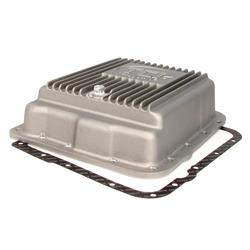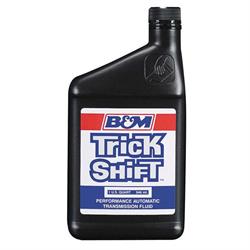Transmission Replacement on a 55 Chevy
If you have read articles about my 55 Chevy you might have noticed a theme; I replace the same stuff over and over. I guess that is typical for most hotrodders though. This time around I was able to break the transmission. I happened to be going down the interstate on my way to a car show. It should have been a nice and easy 350 road trip but less than 100 miles in the transmission was producing some nasty grinding sounds so it was time to pull over. After verifying that the fluid level was ok I went for a little test drive around the parking lot and admitted defeat. The trans was slipping and making some nasty sounds in the process. This is the first time the car has let me down on a road trip!
After getting the car home it was time to decide what to do. I could take this opportunity to upgrade to an overdrive transmission such as a 700r4 or maybe a 2004r, or would it be better to put a 4 speed Muncie or Saginaw trans in the car? There are lots of things to consider. I like the idea of a 4 speed manual, but then I still wouldn’t have an overdrive. I think an overdrive would be great for highway driving, but they are more costly than a th350. I already had the shifter, crossmember and driveshaft for the turbo-hydramatic I have been running so I decided to stick with what I had in effort to keep the budget under control.
I happened to have an extra th350 transmission core so I started by bringing it over to a local friend that builds transmissions for a lot of the area hot rodders and drag racers. The transmission seemed to be in good shape the last time I used it, but the seals had dried up and were leaking. Speaking of leaks, there are two types of turbo 350’s in my experience; ones that leak and ones that are going to leak. In effort to minimize the chance for leaks I decided it would be a great time to upgrade to a TCI Aluminum Deep Pan with a thick gasket sealing surface. TCI offers two different versions for the 350 trans, a standard capacity version and a deep pan that will hold two additional quarts of fluid. Knowing my past I thought it best to get the deeper pan to add some capacity and keep the fluid temps down as much as I could.
The next dilemma I had was whether or not to reuse my torque converter. I had been using a TCI 240900 Breakaway Converter and was happy with the performance. In the spirit of budget hotrodding I really thought reusing it would be fine… but with the way that transmission was grinding I decided to bite the bullet and get a new one. I know it’s possible to flush the converter, but I didn’t want to take any chances if there was some left over debris in there. Don’t let the 10” diameter case scare you away from the breakaway. Initially, I thought it was going to be a wild 3800+ RPM stall converter, but to my surprise these are more mild than you would expect. My car does need a higher stall speed than stock, but 2400 RPM is plenty for this beater!
After getting my freshly rebuilt transmission back, which was much worse than we had anticipated, it was time to make the swap. I had the luxury of borrowing a friends shop and using a lift, which makes it a snap to do something like this! The removal and install process was pretty straight forward, but here are my must dos before removing a trans from a hot rod or muscle car:
- Take the time to disconnect your battery. There are wires that can be pinched by the bellhousing!
- Always take note of how much firewall clearance your distributor has. In this car, I pull the distributor out so that it doesn’t hit the firewall when letting the tailshaft down. I have seen distributors and caps broken when they hit the firewall!
- Drain the trans pan. 12qts of trans fluid tends to make a mess.
- Make sure and get at least 1 quart of Automatic Transmission Fluid into the torque converter. This will ensure your pump has fluid upon startup. Otherwise it was a simple R&R that took an afternoon to do.
Don’t forget that when you have a transmission failure there can be debris and trash in the converter, which is why we replaced it, but in addition you can have debris in the trans lines and the transmission cooler. You can flush them out, or in some cases you might even replace them. I ended up installing a new radiator as well, which I will cover in another article, but these are great things to think about before slamming the car back together.
After bolting everything up and getting the lines hooked up I like to put about 8 quarts of transmission fluid in before starting the engine. With the additional 2 quart capacity we added with the new pan this particular transmission held 12 quarts total. You need to get it up to temperature and run it through the gears before the dipstick will read accurately. The car is back together and is better than ever! I am glad that I had the chance to upgrade the pan and so far it appears to have cured my leaks. I’m happy I stuck with the turbo 350 because it saved me a few dollars and works great for my needs!



